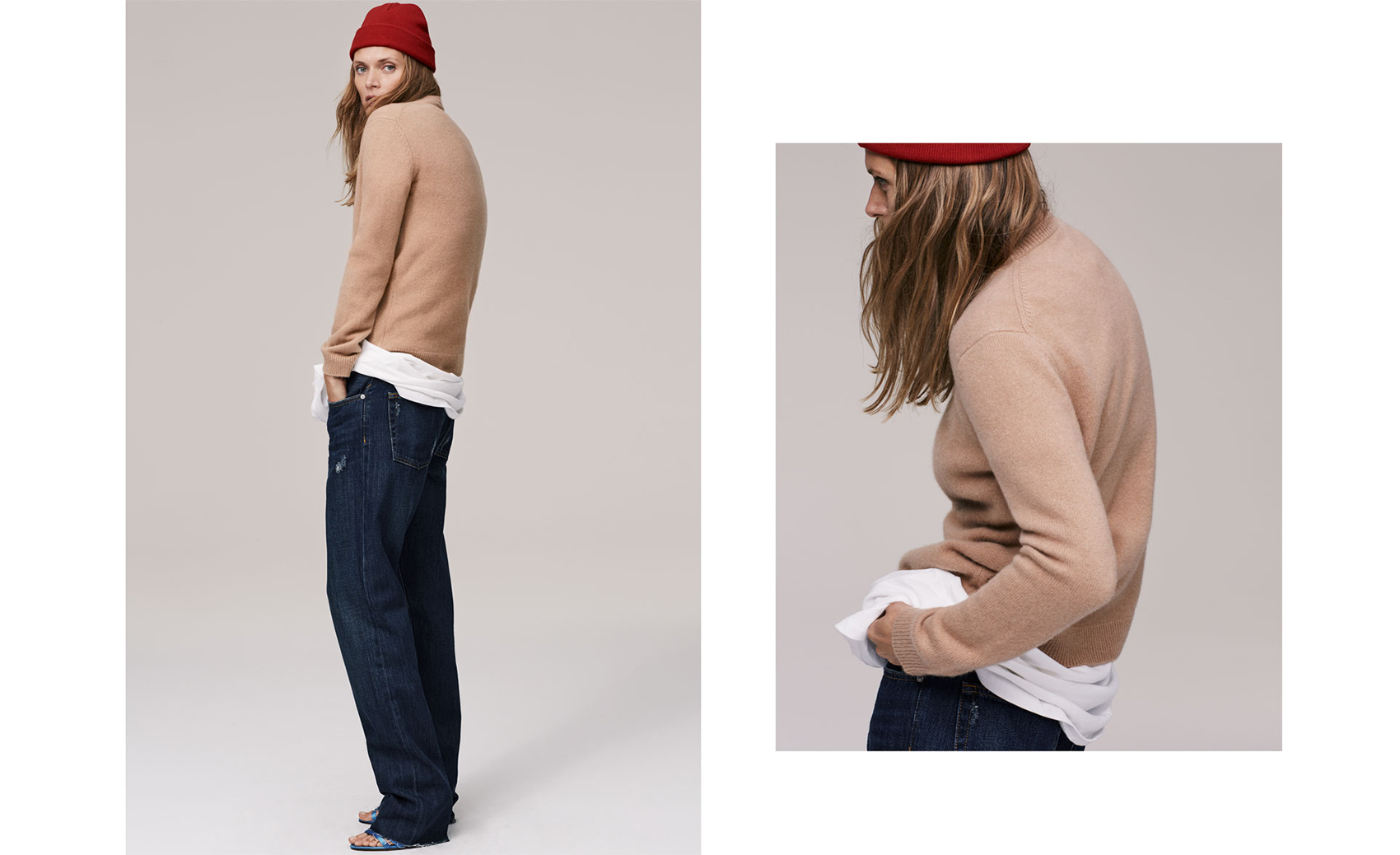The formation of small fuzz balls of fibers (colloquially known as bobbles) on a piece of knitwear is called pilling. All knitwear eventually develops them but the gravity of the problem depends on the quality of knitting yarns. The longer and thinner the fibers used to produce the yarn the more expensive the product. Shorter fibers are more prone to tangling, that's why inexpensive knitwear develop pilling more easily. All other things being equal, smooth knits made of coarser fibers will pill less than a fluffy and voluminous patterned jumper. Yarns with a higher content of synthetic fabrics in their composition are also more pill-resistant. These are some basic rules of the thumb. In fact, however, it is way more complicated when it comes to knitwear.

Lyudmila Norsoyan
Founder of Norsoyan, a brand of innovative knitwear
Production of yarns made of natural fibers (like wool and cashmere) turned into an unpredictable adventure for sheep and goats farmers and those involved into the woolen yarn manufacturing. The climate has changed so as to make wool-bearing animals face shorter growing seasons and pasture and fodder crops that have less nutritional value than is required for proper staples of the wool fiber. 100% natural fiber yarns much favored by the consumer are getting prohibitively expensive to manufacture, which encourages producers to switch to blended yarns to cut costs. Nowadays, it makes more sense to speak not of the percentage of different types of fibers in the composition, be it a 100% natural yarn or a blend, but rather of the content of high quality natural and man-made fibers produced with the state-of-the-art technologies using high-end equipment based on well-calculated formulas and provided with competent final treatment.
Affordable brands advertise 100% natural knitwear yet oftentimes veil recycled wool under this guise. Over 80 billion clothing pieces are produced annually worldwide with approximately 40% of them (the corresponding number for luxury goods is 20%) ending up on seasonal clearance sale bins, i.e. unsold. Unsold clothes from all over the world are then transferred for recycling to the countries of the Third World, mostly to China. Post-consumer textile waste is mechanically shredded there into textile dust. The textile dust is used to re-constitute new fibers for brand new yarns of brand new clothes. Such pieces are labeled as 'Recycled' Recycled yarns have polyester fibers added to them to serve as a 'glue'; however, more often than not this fact is omitted from composition labels. As recently as the 1990s, it was mandatory for the composition label to list all admixtures that made up at least 3% of the composition. Today, it is perfectly legal for the composition label to omit up to 30% of the actual composition.

The consumer is ready take the manufacturer's word for anything whatsoever as long as the piece looks nice and has a fine hand. The 'cashmere jumper' in fact may equally refer to items with 15%, 30%, or 100% cashmere content. And just to make things even more difficult, 100% pure cashmere jumpers made of Mongolian and Italian wools still differ in their qualities. Mongolian cashmere is coarser and more durable, while the Italian flavor is softer and is subject to an earlier onset of the pilling problem.
Modern yarn treatment technologies are constantly being improved upon. These days they are driven by the demand to stock clothing stores with pieces offering hitherto well-nigh unimaginable tactile sensations. Even for an industry insider, it's not uncommon not to guess the actual composition of such knits. Let's assume that you buy a $199 jumper, give it a couple of wears, and then after the very first wash it develops bobbles, loses shape, and shrinks. And there's no way to learn all this other than by wearing the piece. When you come to a Zara store, you accept the rules of the game: you take for granted that these are trendy and affordable pieces, you ignore their actual properties, and are happy to be brainwashed with a social responsibility narrative. The fashion industry is playing hide-and-seek with itself and the customer.
Russian brands, on the other hand, have cemented a reputation for being most pernickety about yarn and knitwear quality. In China and Italy alike our designers and executives are notorious for their thoroughness and uncompromising stand. Brusnika, Mir Stores, 12Storeez, and many others had come a long way by trial and error before settling on reliable sources, and have been closely monitoring them for changes in the price/quality ratio. Major brands face a major issue: their managers are alienated from the final product and nobody has vested interest in the end product. This is essentially a buck-passing system. Unlike them, small brands take full personal responsibility of their products. Hence they strive for perfection quality-wise.
We've put together an edit of pieces by minor Russian labels. Pick the ones to your liking.

Knitwear care basics:
Let your knitwear 'rest' at least 2-3 days after each wearing to allow fibers to stretch and breath. Properly store your clothes by folding them up so that they do not stretch and lose shape.
Hand wash only. Use hair shampoo and conditioner instead of a regular laundry detergent to preserve the softness of knits longer. Always allow to flat dry in the air naturally.
Bobbles cause more bobbles: that's why you want to remove them as soon as they show. It is best achieved by using a purpose-made lint remover. Over the time your knit will get less fluffy with the risk of pilling notably decreasing.
To get pills off a cashmere piece treat them with utmost care by brushing with a specialist defuzzing comb, for example. A lint remover or a single blade razor, although as effective, may leave lasting damage and bald patches on the delicate fabric.
Comments
